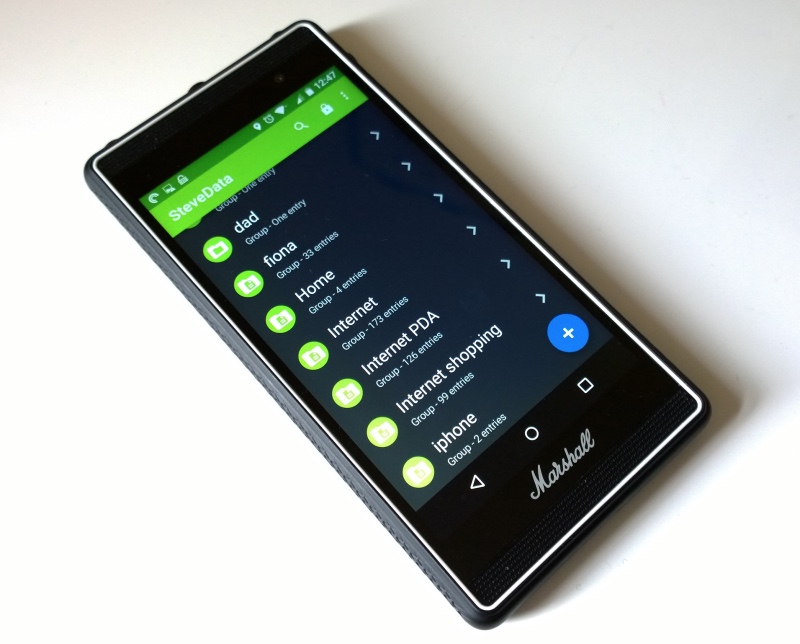HTC seems to have started a trend last year (but in fact it originated a long time ago) of building smartphones out of metal to make them look and feel premium. The company built an entire strategy out of this one claim, emphasizing on materials and manufacturing methods to win over those who have been appalled by Samsung’s cheap and flimsy plastics. But contrary to popular belief, not everyone wants a metallic phone, or thinks that it’s the best solution to the problem. And I am one of those people.
Long before the HTC One, I have owned and used a Nokia E71 and a Nokia N8. The E71 was mostly plastic, with a metallic back cover that took me by surprise the moment I held it. It looked and felt premium, and even my grandmother, who knew nothing about phones but who had seen me use dozens before, stared at it in awe and told me, “this is the most beautiful one.” I used an E71 for a year over the course of which it slipped and dropped dozens of times, but I was never worried because it was built like a tank, and it only had a small non-touch screen.

The Nokia E71, built like a tank
Later, I owned and used a Nokia N8. It was the first anodized aluminum smartphone I had laid my hands on, and it was simply gorgeous. However, I carried it in a case because I was certain I’d scratch that beautiful orange finish, and I was more worried that it would slip from my hand and break the screen.
My experience with both devices has lead me to a love/hate relationship with metallic smartphones, where I love looking at them, I like how premium they feel in the hand, but I wouldn’t buy them. Here are the reasons why.
The temperature is never right
A metallic smartphone is always, always, a few degrees off the right temperature. It tends to be colder to the touch when not in use, and hotter when in use. Imagine hiking, or laying on the beach, or driving on a hot day, with an aluminum phone. Even plastic can get warm to the touch in such scenarios, I couldn’t think of what would happen to metal.
Premium but impersonal
There’s something about a metallic finish that makes a phone feel like a luxury item, and that’s the problem, it’s just an “item”. I’m used to phones being personal, blending in with my hand, disappearing to just leave the screen so I can interact with the content. When I’m using a metallic phone, I’m always aware of it, and that detracts greatly from the experience.
By comparison, my LG G2 does just the opposite. Because of the little bezels, the phone becomes just a screen, and everything else about it disappears while you are using it. It’s a bit like the difference between watching a movie in a theatre with all the lights on or off. If you want an immersive experience, you make everything else as invisible as possible.

Screen, and nothing but screen
Slip-slip slippery
I am a very clumsy person and metallic smartphones, whether donning an anodized matte finish, a brushed one, or a shiny smooth finish, are always slippery in the hand. I could barely use the N8 one-handed before I got a case, and that was a tiny smartphone by today’s standards. However, I can balance my G2 just fine on one hand, and type with my thumb, without risking a heart attack at the thought of it falling.
That’s why I wouldn’t dare hold an HTC One or any of the rumored metal “Prime” devices with 5.5″ screens and huge footprints with one hand. As my friend and fellow AndroidBeat writer Abhijeet Mishra told me while we were discussing this issue, “ergonomics are where Sony and HTC both fail despite great designs, and it’s too bad consumers accept it in the name of looks.” And I wholeheartedly agreed.
Case: a necessity not an accessory
Continuing my conversation with Abhijeet, he made another excellent point, “the more premium it gets, the more a case is needed. HTC is so sure the M8 needs a case that they put one right in the box.” That embodies my experience with metal smartphones. It’s not only about ergonomics and slippery finishes though, but also about psychology. The more expensive a device feels, the more you are scared of harming it, and the more a case becomes mandatory.
And when your sexy well-built smartphone is in a case — whether for safe-keeping or for better handling — it almost feels like a waste. You can never win in that case (pun intended), can you?
There’s a right way to do plastic
I will go back to Nokia for a second and say that the company showed us that there is a right way to do plastics. Their polycarbonate finishes on the Lumia series were spectacular, ergonomic, solid, and they still felt premium. Even the iPhone 5C went for the same material. Plastic doesn’t have to be cheap, wobbly, and badly done. It can be executed to perfection, for an excellent blend of look, feel, and functionality.

Nokia Lumia 800: plastic executed to perfection
This metal trend scares me
I honestly don’t know what is it about HTC that makes many reporters in the mobile industry hang open their mouths in awe. I’ve previously argued that Sony and LG are quite a long way ahead in being “Quietly Brilliant” yet HTC gets more good press than both combined. That seems to have lead everyone to believe that metal smartphones are “the” must-have item on a checklist when building a premium device.
So here we find ourselves, in the middle of 2014, with Samsung, LG and Sony, all rumored to have metal flagships in the works — although I’m hoping LG has figured a way to make plastic look like metal in its G3, for the best magic trick in the history of smartphones. And it seems that we might all be forced to get a metallic smartphone, whether we like this material or not, if we want the highest specs possible.
Abhijeet and I couldn’t possibly be the only smartphone users who have this opinion about metal. So please let us know in the comments if you agree or disagree with us.








